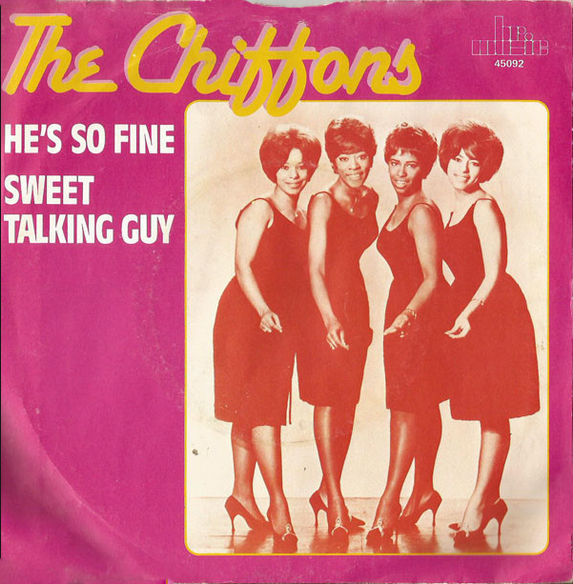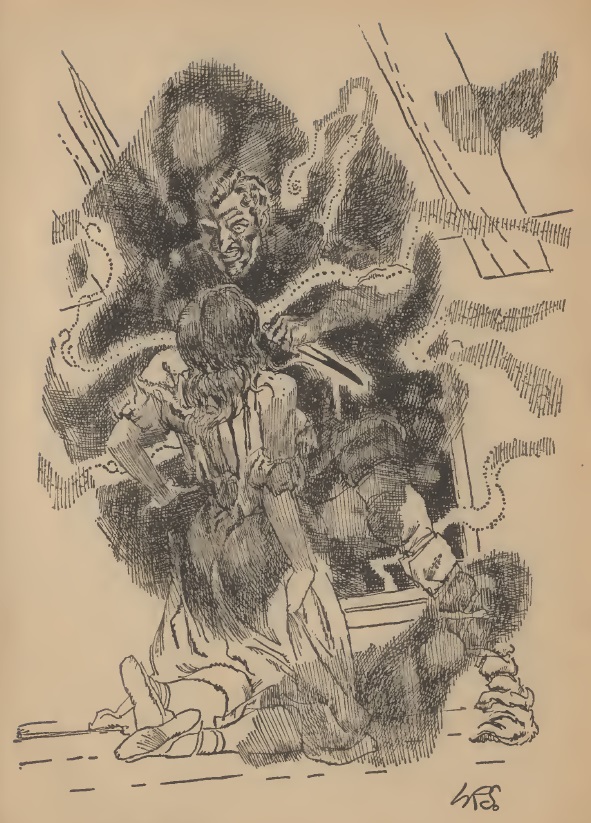
by Victoria Silverwolf
It might be my imagination, but it seems that events came in pairs this month.
On April Fools' Day, two new medical soap operas premiered on American television. I'm not fond of that genre – give me Route 66 or Alfred Hitchcock Presents when I want something other than science fiction and fantasy – so I don't know if General Hospital or The Doctors will catch on.

Can you tell which one is which?
A pair of accidents involving nuclear submarines happened only two days apart. On April 10, the United States vessel Thresher sank, with the loss of all aboard.

More fortunate was the Soviet submarine K-33, which collided with the Finnish merchant ship Finnclipper on April 12. Although severely damaged, both vessels managed to reach port safely.

Remaining at the top of the American music charts for double the number of weeks of most hit songs, He's So Fine by the Chiffons filled the airwaves with its memorable background chant doo-lang doo-lang doo-lang.

Appropriately, the latest issue of Fantastic contains stories that fall into pairs, as well as a hidden doubling of two authors.

Devils in the Walls, by John Jakes

The magazine opens with a pair of sword-and-sorcery stories. The first is the more traditional of the two. A mighty barbarian, who will remind you of Conan, falls victim to slave traders. A beautiful woman purchases him. If he will venture into the haunted ruins of her father's castle to retrieve a great treasure, she will set him free. He must overcame natural and unnatural menaces to win his freedom. It moves briskly, and there are some good descriptions, but it is a typical fantasy adventure. Three stars.
The Cloud of Hate, by Fritz Leiber

The creator of Fafhrd and the Gray Mouser relates another tale of this pair. A supernatural mist made out of hate possesses four of the worst murderers in the magical city of Lankhmar. The two adventurers must use all their skill to defeat them. Although this is not the most important incident in the lives of the daring duo, the author adds style, wit, and imagination to the genre. Four stars.
The Message, by Edward Wellen

In ancient China, a naked man with green skin appears out of nowhere. A woodcutter takes the man into his hut and educates him. Eventually he becomes one of the most important persons in the land, and is responsible for some of the great events in Chinese history. The reasons for his actions are unexpected. This is mostly a work of historical fiction, with a touch of speculative content. Although not without interest, I thought it was a bit too long. Three stars.
Threshold of the Prophet, by Roger Zelazny
A man named Crane appears from nowhere (another doubled theme of this issue) in New York in the far future. The Brooklyn Bridge is destroyed and falls into the Hudson River. Crane, who seems to have god-like powers, retrieves it and tries to sell it to an old man in the country. Without the story's literary allusions (clarified by the editorial introduction), it would be meaningless. Two stars.
Anything for Laughs, by Ron Goulart

The first of a pair of comedies in this issue is about an unemployed man who is pressured by his girlfriend into entering a job lottery. He winds up as a court jester on a planet ruled by a dictatorship. Somebody uses his name on revolutionary pamphlets, and his troubles begin. Some readers may find this more amusing than I did. Two stars.
One False Step, by David R. Bunch

A specialist in dystopia offers a grim tale of a man who made one mistake. His job was a gruesome one. When he fails at it, his punishment involves tending metallic plants, one of the many unpleasant aspects of this bleak future world. This story will not be to the taste of all readers, but I found it powerful. Four stars.
The Screams of the Wergs, by Jay Scotland

John Jakes is the first of two repeated authors in this issue, both hiding under pseudonyms containing the names of nations. Extraterrestrials experience extreme pain when tourists take flash photographs of them. A human who tries to protect them goes to extreme lengths. It turns out that things are not what they seem. This science fiction story never grabbed me. Two stars.
Monologue for Two, by Harrison Denmark
As readers of Cele Goldsmith's pair of magazines know by now, this author is really Roger Zelazny. Only two pages long, this story offers one side of a conversation. Through it we see a man who suffered at the hands of another obtain great power, and win his revenge. It's an effective narrative gimmick. Four stars.
Professor Jonkin's Cannibal Plant, by Howard R. Garis

The second comic story in the magazine is a reprint from the August 1905 issue of Argosy. A scientist greatly increases the size of an insect-eating plant by feeding it large pieces of meat. As you might imagine, this is a bad idea. Nothing surprising happens, and it's not particularly funny. Two stars.
Love Story, by Laurence M. Janifer
This is a satiric story that begins as light comedy, but turns into something quite different at the end. A man who truly loves other people causes the Earth to rotate in only four hours. A scientist, frustrated by his failure to find a rational explanation for this phenomenon, solves the problem in the most direct way possible. The last two paragraphs makes the reader reconsider the author's intention. Three stars.

Do all these pairs double your pleasure and double your fun? More importantly, do they justify the magazine's new price of fifty cents? Maybe you should enjoy a stick of gum while you consider these questions.


That seems an interesting issue, judging by the list of authors anyway, but I’ve noticed that they are all mixed bags. What’s your favourite issue from the ones you have read so far?
Well, that's a tough call. I've only been reading the magazine since October of 1961, for one thing. For another, every issue seems to be a very mixed bag.
It would be easier to mention the best stories I've read over the last twenty months.
"This is Your Death" by Albert Teichner (January 1962)
"The Star Fisherman" by Robert F. Young (June 1962)
"The Singing Statues" by J. G. Ballard (July 1962)
"Sword of Flowers" by Laurence M. Janifer (as "Larry M. Harris") (August 1962)
"April in Paris" by Ursula K. LeGuin (September 1962)
"The Unholy Grail" by Fritz Leiber (October 1962)
In retrospect, they certainly had a good run last year!
The Jakes wasn't bad, but it is rather outdated. The whole time I was reading it, I kept thinking, "This would have been a real corker thirty years ago."
Which makes my real enjoyment of "The Cloud of Hate" seem a little hypocritical. But Leiber is a better writer and there's something more modern about his tales of Fafhrd and the Mouser. They may look like they're wearing old clothes, but there's a lot more going on there than you see at first glance.
I agree that the Wellen was overly long, but I enjoyed it quite a lot, too. Much of the tale comes straight out of Chinese legend. It also reminded me a bit of Ernest Brahma's Kai Lung stories.
Zelazny appears to have trying to write a Ray Bradbury story. This was more like a lot of his recent mediocre output, than his excellent early work or the last couple of really good stories. I really want to see more of THAT Roger Zelazny.
I liked the Goulart better than you did. Not that it was anywhere near as funny as it wanted to be, but I think it achieved all the other things the author wanted. Sort of an anti-Retief.
The Bunch story was not my cup of tea. I liked it better than anything else of his I've read, but that's a somewhat low bar to hurdle. I continue to be rather ambivalent about his work.
"Wergs" was another story that took too long to reach its destination. Unfortunately, it wasn't a destination that was worth the journey.
The "Denmark" was good, but it didn't stay with me. I had to go back and reread the story to remember anything at all about it. Generally, that's not a good sign.
I liked the reprint better than you did. It helps to remember that it's from a very different time. Goodness, it's older than I am. Have you ever found yourself rereading an old Heinlein story, say, and found yourself thinking, "Not this hoary old trope again!" and then you realize the story you're reading created that hoary old trope? There's a bit of that going on here.
I fear the last two paragraphs of the Janifer didn't change my opinion of what the author was trying to do at all. Perhaps I didn't fully understand it.
Was the issue worth the new price? As it stands, a definite maybe. Shorten "The Message" by 4 or 5 pages and put in a good short story, and it would definitely be yes.
I like this issue more than you do but that isn't why I'm writing. I just want to make note of what a fine cover artist Vernon Kramer has become.
I know that Kramer did some unimpressive covers for Fantastic in the 1950's but I have really liked all the covers of his that I have seen since. The only ones I am familiar with are those from Fantastic and Amazing, so if he has done others, I have missed them. I have to stress that I am only speaking of Kramer's work in color. I think his interior illustrations are okay but certainly not much more than that.
The covers I have seen are from:
Fantastic
1961 – May, July
1962 – August
1963 – January, May
Amazing
1963 – February
I hope we see many more years of Vernon Kramer's excellent covers.
Those earlier Kramer covers were from the Nov/Dec 1953 and Jan/Feb 1954 issues of FANTASTIC. He also had at least one interior illustration in GALAXY (Feb 1958, for the Harry Harrison story) and possibly others — I'll admit to not always paying attention to interior art.
I assume he has a day job that pays the rent — otherwise, a seven -year gap between covers for your major client would be, ah, worrisome.
I thought the Leiber good, the Bunch fair, and the Denmark excellent.
Interestingly, there's nothing that keeps the protagonist from being a woman (and, indeed, that's what I thought she was).
And not that I imagine anyone would be interested, but this issue is of special interest to me because I bought it off the rack at a store in Winnipeg, which was where my senior high class (Lake Park, Minnesota) went to on our class trip a few days ago.
You know you are destined to grow up to be a nerd when your high school is wild and crazy enough to decide to go to a medium-sized Canadian city for your "coming of age" adventure — and that you are destined to grow up to be an sf nerd when one of the most memorable things about it for you was the sf/f magazine you bought there. (Other purchases I can report include a 45 of "Cathy's Clown" by the Everly Brothers and a used copy of FANTASTIC FOUR #7, which I'd missed picking up on the stands back in The States.)
We also while there saw THE DAYS OF WINE AND ROSES, but I don't think it's going to persuade any of us to avoid The Demon Rum in our adulthood. Or even The Demon Wine.